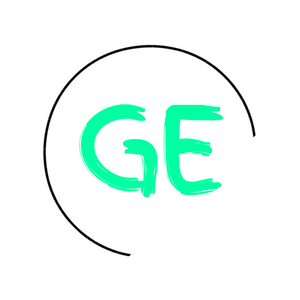Conversion Efficiency, Capacity Factor, and Overall Efficiency
Contents
Introduction
Conversion Efficiency
Capacity Factor
Overall Efficiency
Concluding Remarks
A ChatGPT Story
Bitesize Edition
Efficiency is discussed frequently when it comes to renewables. Type into Google what the typical efficiency of a wind turbine is and you receive a figure of 20–40%. It’s often just assumed when comparing these electricity generation methods that whoever calculated this is correct for every possible environment and scenario on planet Earth.
I decided I’d test whether these efficiencies were true in scenarios based on the average environment in the UK.
Conversion efficiency is the ratio between wind energy input and electrical energy output by a wind turbine. Capacity factor is the average power output divided by the theoretical maximum power output and overall efficiency measures account for other losses such as transmission grid loss.
Together, these metrics help tell a story for the environment I’ve chosen today, the UK. I hope it could set up similar calculations for other nations. All my sources for metrics used are listed at the bottom of the article.
Introduction
When it comes to the efficiency of wind turbines, there are a few of the metrics from last week’s list that we can cast aside. Firstly, heat rate is used to measure the ability of a generator or power plant to convert fuel into heat and then electricity. Thermal efficiency also isn’t a valid measure since wind turbines generate electricity mechanically. Hence, today we’ll explore conversion efficiency and overall efficiency.
Photo by Max Bender on Unsplash
Conversion Efficiency
Conversion Efficiency — The ratio between the useful output of energy and the energy input.
For a wind turbine to be 100% efficient, all wind energy input into the turbine would need to be converted to electrical energy, and this would mean the wind would have to stop completely when it hits the turbine. This isn’t possible since the rotor moves with the wind energy it receives. Most wind turbines are 25–45% efficient but let’s back this up with an example. Typically, turbines produce electricity at between 3 and 25 m/s but aren’t economically viable at less than 5m/s. UK wind speeds are typically between 5m/s and 8m/s. Turbines typically have an electrical output power between 2.5–3 MW for onshore turbines, and in 2022, the average rotor diameter was over 130m, so the radius would be 65m.
In the example below, we’ll assume we have a 2500KW turbine (2.5MW), an air density of 1.225 kilograms per cubic metre, and a wind turbine radius of 65m.

By the Betz limit, the maximum efficiency of an individual wind turbine can be 59.3%. So, what’s gone wrong? My assumptions are flawed. Let’s explore each assumption I’ve had to make.
Electrical Output Power = Occurs in optimal conditions based on wind turbine design. The actual power output depends on wind speed and other efficiency losses. A 2500KW wind turbine would produce 2500KW of electrical energy if operating at 100% efficiency.
Air Density = Typical UK air density is 1.225 kilograms per cubic metre.
Rotor Swept Area = All we need here is the diameter of the wind turbine. This means the length of the blade of the wind turbine multiplied by 2. We then calculate the area using:
Wind Speed = UK wind speed ranges from 5m/s to 8m/s annually.
From this, it makes sense that the electrical power output of the wind turbine is assumed to be too high. This is where the capacity factor proves useful.
Photo by Khamkéo Vilaysing on Unsplash
Capacity Factor
Capacity factor is the average power output divided by its maximum power capability under optimal conditions. The capacity factor of onshore wind turbines in the UK is 7.2%. Let’s apply this to a calculation.
If a wind turbine is 1000KW and has a capacity factor of 0.072, then it produces 72KW of electrical output power. A turbine with a 100% capacity factor would produce 1000KW. Hence, this is why our first calculation was flawed. We assumed the capacity factor was 100%!
For a 7.2% capacity factor, let’s calculate the conversion efficiency of our 1000KW turbine:

As we can see, here we have some low conversion efficiency from wind energy to electrical energy. This is because of the environment in the UK. Higher efficiencies will occur under conditions in which wind turbines are more effective, such as high terrain, or coastal regions. Slovakia has a capacity factor of 59.7% so the same 1000KW turbine in Slovakia would have an electrical power output of 597KW. Why not check this calculation out yourself following the same process as above?
Photo by Štefan Štefančík on Unsplash
This example provides a snapshot in time of a wind turbine’s conversion efficiency in idealised conditions which is what Betz Limit does. Betz limit assumes an infinite number of blades with no drag. In reality, a wind turbine has gaps between the rotors where the wind passes through. Air density also isn’t constant from calculation to calculation. This would lead to all turbines having a lower efficiency than the Betz Limit of 59.3%. Any turbine receiving a higher efficiency than this has flawed assumptions as to the figures input into the calculation.
It’s clear from this example that mathematical efficiency calculations can provide useful insights, but we need to be aware that when we see large efficiencies, this is under idealised conditions. Overall efficiency actually achieved will be lower. Conversion energy doesn’t consider the entire system of inputs, outputs, and losses. I’ll now seek to expand the system we’re considering receiving more accurate efficiency percentages for wind turbines using the following equation.
Overall Efficiency

This is a turbine with the exact same wind energy input and losses, but a lower electrical power output. This demonstrates why the physical characteristics of a wind turbine are of vital importance.
Photo by Sander Weeteling on Unsplash
Realistically, a smaller turbine would receive less wind energy input as it would be smaller in height and rotor length, but this was a scenario I wanted to use to show the reduced overall efficiency.
Again, why not try for a turbine in Slovakia with a 59.7% capacity factor?
Concluding Remarks
This indicates why it is so important to consider the environment when it comes to our electricity generation methods. An average onshore turbine of 2.5–3MW with 50m length blades can power close to 1500 homes (EU data). If this was transferred to the UK which has 29.9 million dwellings, we would need 19,934 wind turbines to power the entire country. We currently have over 2500 turbines in the UK. It’s an achievable expansion and wind certainly has a place in our clean energy transition. But we can’t blind ourselves to the low capacity factors and efficiencies. When the wind isn’t blowing, until we develop sufficient battery storage, which is seemingly decades away and faces raw material constraints, we need baseload power. I’m not on the side of one electricity generation method, I’m on the side of them all. We just need to not overcommit to one, and diversify our electricity generation portfolio. For some nations more than others, I hope this can aid as a fruitful example.
A ChatGPT Story
For those who have been reading my blogs for a while, you’ll know that a few months back I got into a brawl with ChatGPT over a compound interest calculation. It turns out that ChatGPT’s worst nightmare is power efficiency calculations.
ChatGPT got itself stuck in an infinite time loop after calculating an efficiency of over 100\% for an example I was checking. Upon informing ChatGPT of this issue, it started to calculate the same calculation over and over again until I intervened to stop it before it got tired. If I didn’t prompt the stop, I wonder if it would have continued forever.
If you think AI data centres are going to increase electricity demand, I’d argue me sitting at home luring ChatGPT into infinite loops of mathematical confusion would come close. In summary, don’t trust ChatGPT for mathematics yet.
Note: When calculating the efficiencies, the bottom figure is in watts and the top figure is in kilowatts. Divide by 1000 to turn watts into kilowatts.
Thanks for reading! If you want more then subscribe on Substack for these posts directly to your email inbox. I research history, geopolitics, and financial markets to understand the world and the people around us. If any of my work helps you be more prepared and ease your mind, that’s great. If you like what you read please share with others.
Key Links
The Geopolitics Explained Podcast
Sources
https://www.mfsuk.com/blog/how-many-houses-in-the-uk/#:~:text=More%20recent%20data%20suggests%20there,and%20822%2C083%20in%20Northern%20Ireland.
https://windeurope.org/about-wind/daily-wind/capacity-factors
https://www.linkedin.com/advice/1/how-can-you-determine-energy-output-wind-turbines#:~:text=The%20energy%20output%20of%20a%20wind%20turbine%20can%20be%20estimated,the%20time%20period%20in%20hours.
https://www.energy.gov/eere/articles/wind-turbines-bigger-better
https://scholarworks.uark.edu/cgi/viewcontent.cgi?article=1070&context=meeguht
https://en.wikipedia.org/wiki/Betz%27s_law#:~:text=Betz's%20law%20shows%20that%20as,to%20a%20maximum%20of%2059.3%25.
https://www.ewea.org/wind-energy-basics/faq/#:~:text=How%20big%20is%20a%20wind,than%201%2C500%20average%20EU%20households.
https://thundersaidenergy.com/downloads/wind-power-impacts-of-larger-turbines/#:~:text=The%20best%20overall%20formula%20for,(in%20meters%20per%20second).
https://digitalcommons.usf.edu/cgi/viewcontent.cgi?article=4865&context=ujmm
https://www.vernier.com/experiment/rev-12_turbine-efficiency/
https://www.epa.gov/sites/default/files/2019-08/documents/wind_turbines_fact_sheet_p100il8k.pdf




